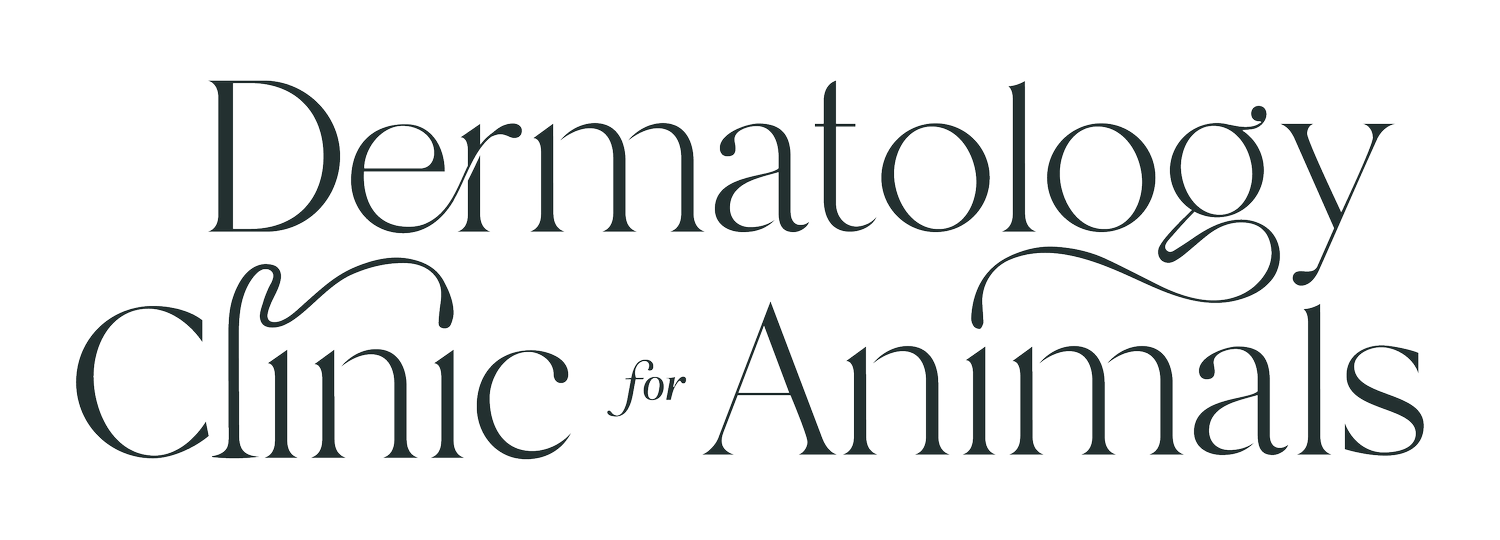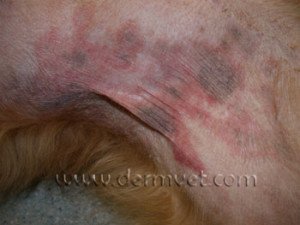Pyoderma
Also Known As: Bacterial Skin Infection, Bacterial Folliculitis
-
Common underlying causes for bacterial skin infections include trauma, allergies (flea, pollen, food), parasitic infestation, hormonal disorders such as hypothyroidism or Cushing's disease, autoimmune diseases, or immunosuppressive medications.
-
Bacterial skin infections can affect a dog of any breed, age, or gender, however, dogs with underlying conditions such as allergies, parasites, or hormonal diseases are more commonly affected. Cats can also be affected by bacterial skin infections, most commonly abscesses secondary to fighting.
-
Localized, multifocal, or generalized areas of hair loss, pimples, red bumps, and crusts are most commonly seen with a superficial bacterial pyoderma. Short-coated dogs may have a moth-eaten appearance, or small tufts of hair standing up. Long-coated dogs may hide the skin lesions and just have a dull coat and scaling, but when the coat is clipped, the underlying crusts or rash are evident. In some dogs, the bacterial infection penetrates deeper, and symptoms such as thickened, inflamed skin with draining tracts or ulcers and pus or bloody discharge can be seen. Dogs with bacterial skin infections may have itching that ranges from mild to severe.
-
See Clinical Signs.
-
The diagnosis of bacterial skin infection is based on symptoms, clinical appearance, and by ruling out the other causes of similar skin lesions such as demodex mites or fungal infection. Diagnostic tests such as skin scrapes and microscopic analysis for mites and bacteria are usually performed, and a fungal culture may be also recommended. Occasionally skin biopsies or cultures are obtained in cases that are chronic or unresponsive to medications. Additionally, in recurrent cases of bacterial skin infections, it is important to identify the underlying cause, and diagnostics such as allergy testing, a hypoallergenic diet trial, or blood testing for hormonal diseases may be warranted.
-
The prognosis for an uncomplicated superficial bacterial skin infection is good, as the infection is cleared by a 2-3 week course of oral antibiotics. The prognosis for deeper infections is good to guard depending on the underlying cause of the infection, and oral antibiotics may be needed for 1-3 months. The prognosis for recurrent skin infections also varies depending on the underlying cause, and some animals are not cured, but controlled with intermittent antibiotic therapy and/or topical antibacterial medications.
-
Treatment for superficial skin infections is usually a 2-3 week course of oral antibiotics. Deeper skin infections are treated with antibiotics for 1-3 months. Topical antibacterial shampoos, creams, or sprays can also be helpful adjunctive therapy and sometimes can be used as the only therapy in very mild or localized infections. In animals with recurrent or deep skin infections it is essential to identify and treat the underlying cause.



